Hverdagen til kidsa. Hva kan vi lĂŠre? Med Kristin Magnussen
Download as pptx, pdf1 like1,287 views
Kristin Magnussens slides fra Webdagene 2017
1 of 25
Download to read offline
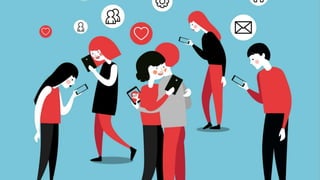
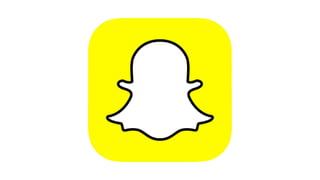

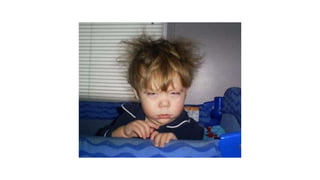
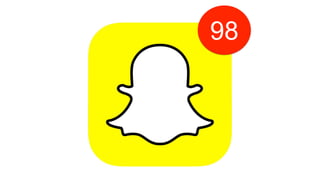
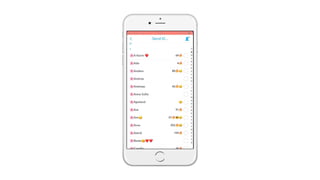

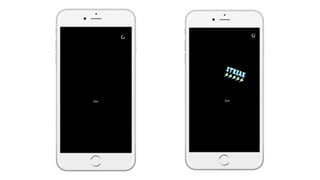


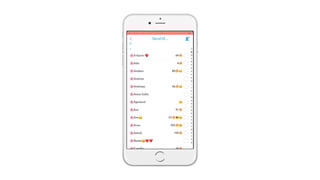
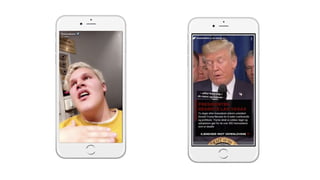
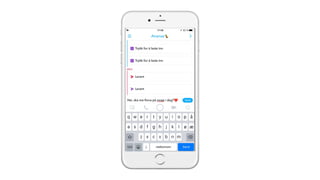
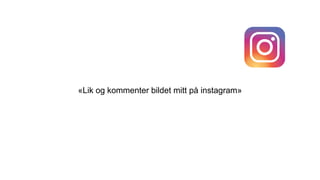
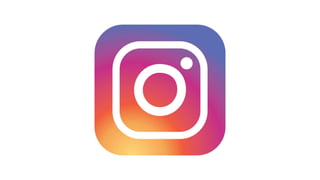

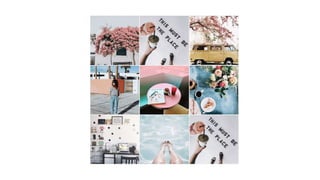


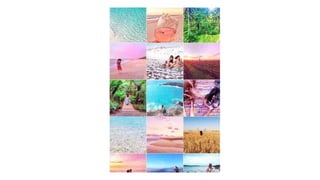

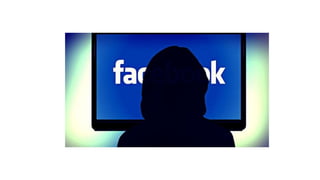

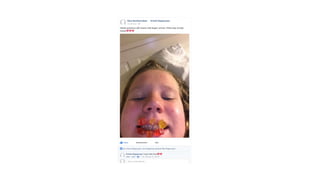
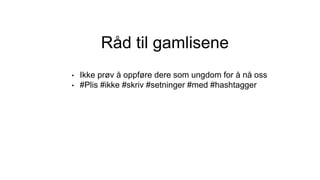
Ad
Recommended
Building bridges on diversity: What the fight for civil rights can teach us a...
Building bridges on diversity: What the fight for civil rights can teach us a...webdagene
Ìę
Data + human stories makes a powerful combination when youâre trying to change the world.The voice of the future (en) â med Cheryl Platz
The voice of the future (en) â med Cheryl Platzwebdagene
Ìę
Cheryl Platz has been designing voice and multimodal interfaces since 2006. She discusses 3 opportunities for improving voice user interfaces: 1) Addressing bias in current systems through more inclusive training data, 2) Moving beyond siloed assistants to collaborative systems, and 3) Developing more conversational assistants through understanding of context and non-verbal cues. Platz envisions a future where voice interfaces amplify humanity by building trust over time and empowering users through enhanced productivity, adaptivity, and companionship.Hvorfor personvern er viktig for kommunikasjon â med Eva Jarbekk
Hvorfor personvern er viktig for kommunikasjon â med Eva Jarbekkwebdagene
Ìę
LĂŠr mer om de nye personvernreglene som kommer i mai 2018.Slik kommuniserer du til hele hjernen (sv) â med Erik Modig
Slik kommuniserer du til hele hjernen (sv) â med Erik Modigwebdagene
Ìę
This document discusses how to communicate effectively to the whole brain. It suggests balancing social, professional, private, and political communication styles. It also recommends keeping messages short, focusing on effectiveness and emotional intelligence over stance-taking. The goal is to communicate in a way that engages both logical and emotional thinking. The document is signed by Erik Modig, a PhD researcher from the Stockholm School of Economics.Hvordan bruke UX i design av hardware â med Marius Aabel
Hvordan bruke UX i design av hardware â med Marius Aabelwebdagene
Ìę
Hvordan bruke UX i design av hardwareOm Ă„ bryte tabuer pĂ„ Snapchat â med Tale Maria Krohn Engvik
Om Ă„ bryte tabuer pĂ„ Snapchat â med Tale Maria Krohn Engvikwebdagene
Ìę
LĂŠr hvordan Helsesista bruker digitale kanaler til Ă„ bryte tabuer og hvordan det er Ă„ vĂŠre Den Ene for sĂ„ mange.Enkel og effektiv brukertesting â med Ida Aalen
Enkel og effektiv brukertesting â med Ida Aalenwebdagene
Ìę
Ida gir dere 7 enkle og effektive teknikker som du kan ta i bruk i morgen.Ten realities of the internet of things â âAlexandra Deschamps-Sonsino
Ten realities of the internet of things â âAlexandra Deschamps-Sonsinowebdagene
Ìę
The document discusses the need for an internet of things (IoT) certification mark to encourage ethical development of connected products and give consumers more choice, transparency, and protection. It would address issues like privacy, interoperability, openness, data governance, permissions, security, and product lifecycle/support. While developing such standards would be difficult, it could help the IoT industry adopt best practices and help consumers make more informed decisions about connected devices and services. The certification mark is presented as a way to champion good industry practices in a non-regulatory way and help both businesses and users navigate increasing regulation like GDPR.Internett. Hva nĂ„? â med Jostein Magnussen
Internett. Hva nĂ„? â med Jostein Magnussenwebdagene
Ìę
Stopp. Tenk. Hvor har dette internettet tatt oss? Hvor gĂ„r vi fremover?Nysgjerrighet som drivkraft â med Louise Fuchs
Nysgjerrighet som drivkraft â med Louise Fuchswebdagene
Ìę
Vi er bare mennesker, hvordan skal vi klare Ă„ lĂŠre oss nye ting hele tiden?Scaling service design and the challenge of problem-caring â Sanjay Poyzer
Scaling service design and the challenge of problem-caring â Sanjay Poyzerwebdagene
Ìę
Director of Service Design at the UK Government Digital Service5 grep for kundeorientering i en digital hverdag. â med Guro RĂžberg og Ove Dalen
5 grep for kundeorientering i en digital hverdag. â med Guro RĂžberg og Ove Dalenwebdagene
Ìę
Guro og Ove gir deg konkrete verktĂžy for Ă„ komme nĂŠrmere kundene dine.Ten realities of the internet of things - âAlexandra Deschamps-Sonsino
Ten realities of the internet of things - âAlexandra Deschamps-Sonsinowebdagene
Ìę
The document discusses the risks associated with connecting physical devices to the internet. It notes that internet of things devices can be hacked at the hardware, firmware, or cloud level. Regulations like GDPR will help address some risks for devices sold in the EU, but physical safety issues, connectivity problems, and uncertified products also pose risks. Additionally, most internet of things companies have high failure rates due to the expenses of supporting both digital and physical components of devices. The document encourages considering these risks and challenges when planning for an interconnected world of internet of things technology.Hvordan menneskesentrisk teknologi endrer kundeopplevelsen â med Claude Marie...
Hvordan menneskesentrisk teknologi endrer kundeopplevelsen â med Claude Marie...webdagene
Ìę
Hvordan menneskesentrisk teknologi endrer kundeopplevelsenUnderstanding humans â Leah Reich
Understanding humans â Leah Reichwebdagene
Ìę
Leah Reich gave a presentation in Oslo, Norway in October 2017 about designing technology with empathy for human administrators and infrastructure. She argued that technology cannot replace bureaucracy and that organizations need human infrastructure to function, but it often sucks currently. Reich advocated for organizations to cultivate a culture where administrators feel supported and appreciated as a whole, rather than just as individuals.The dark net â Jamie Bartlett
The dark net â Jamie Bartlettwebdagene
Ìę
The internet is not for wimps! Get ready to dive into the world wide undergrounds of the web.UX of Story: Designing the Future of Storytelling â Mandy Mandelstein
UX of Story: Designing the Future of Storytelling â Mandy Mandelsteinwebdagene
Ìę
The document discusses Mandy Mandelstein's interest in designing future storytelling mediums that incorporate technology. It describes how she realized user experience design principles from human-computer interaction could be applied, with the user being the viewer of a storytelling medium. The document also briefly outlines how storytelling mediums have changed over time, from filmmaking making stories less interactive than previous mediums like radio, to people now consuming stories in new places with new technologies. It quotes Janet H. Murray saying all successful storytelling mediums eventually become transparent, where the medium fades away and only the story itself remains.Nysgjerrighet som drivkraft â med Louise Fuchs
Nysgjerrighet som drivkraft â med Louise Fuchswebdagene
Ìę
Vi er bare mennesker, hvordan skal vi klare Ă„ lĂŠre oss nye ting hele tiden?The customer universe â med Gerry McGovern
The customer universe â med Gerry McGovernwebdagene
Ìę
A UN study from 1995 and 2016 found that the percentage of people considered "incredibly stupid" or "stupid" decreased from 60% to 50% while the percentage considered "clever" or "incredibly clever" increased from 40% to 50%. Most organizations want customers to do what the organization wants but customers actually want simplicity and only click on 5% of what organizations present. Successful teams spend 2 hours every 6 weeks directly with customers.Jonathan MacDonald: Maximising the opportunities in a changing digital landscape
Jonathan MacDonald: Maximising the opportunities in a changing digital landscapewebdagene
Ìę
The document discusses the relationship between innovation and thought, emphasizing that the ability to innovate is closely tied to one's capacity to elevate thought processes. It highlights that 86% of innovation carries low risk and contributes about 30% to company profits, while 14% of radical innovations account for 70% of profits. The content suggests that organizations should test, learn, and improve to capitalize on growth opportunities.Lauren Currie: The science of doing good things
Lauren Currie: The science of doing good thingswebdagene
Ìę
The document discusses the importance of design in shaping public services and community planning, emphasizing the need for better systems thinking and co-design processes. It highlights a pilot project in North East Edinburgh where young people are engaged in creating solutions for community issues, culminating in the presentation of their work through a published newspaper. The content urges listeners to foster honest conversations and demonstrate empathy to inspire change and improvement in various societal sectors.Ove Dalen: Sannheten om innholdsmarkedsfĂžring
Ove Dalen: Sannheten om innholdsmarkedsfĂžringwebdagene
Ìę
InnholdsmarkedsfĂžring er den nye appen. Alle skal ha det. Men ingen vet helt hvordan de skal fĂ„ det til. De to stĂžrste problemene i dag er at vi mangler tydelige strategier for hva vi vil med innholdet og en organisasjon som kan jobbe fornuftig med forbedring, forvaltning og vedlikehold.Mike Monteiro: This is the golden age of design! âŠand we're screwed
Mike Monteiro: This is the golden age of design! âŠand we're screwedwebdagene
Ìę
Mike Monteiro emphasizes the current challenges in the design field, including the difficulty in finding and managing skilled designers. He critiques design education while advocating for the importance of experience and collaboration in design teams. The document ends on a note about design being a political act and the urgency of addressing industry concerns.Ida og Ida: Ta sosiale medier pÄ alvor
Ida og Ida: Ta sosiale medier pÄ alvorwebdagene
Ìę
Ida og Ida, som leverte fjorÄrets beste foredrag, er tilbake. Denne gangen er temaet sosiale medier.Jeff Gothelf: Building a culture of innovation
Jeff Gothelf: Building a culture of innovationwebdagene
Ìę
The document discusses the necessity of building a culture of innovation to thrive in a continuously changing digital world, emphasizing learning and team dynamics. Key elements for fostering innovative teams include small, collocated, dedicated, and self-sufficient structures, along with effective incentives and collaboration. The shift from a delivery-oriented culture to a learning-oriented culture is vital for maximizing creativity, reducing waste, and enhancing employee morale.Wilhelm Joyce Andersen: CMS-debate
Wilhelm Joyce Andersen: CMS-debatewebdagene
Ìę
The document discusses the challenges faced by content management systems (CMS) in balancing simplicity and complexity. It suggests that although CMS have improved ease of use, they have also made more complex tasks harder to manage. The future CMS should focus on doing fewer things better, questioning what essential features should be included.More Related Content
More from webdagene (20)
Enkel og effektiv brukertesting â med Ida Aalen
Enkel og effektiv brukertesting â med Ida Aalenwebdagene
Ìę
Ida gir dere 7 enkle og effektive teknikker som du kan ta i bruk i morgen.Ten realities of the internet of things â âAlexandra Deschamps-Sonsino
Ten realities of the internet of things â âAlexandra Deschamps-Sonsinowebdagene
Ìę
The document discusses the need for an internet of things (IoT) certification mark to encourage ethical development of connected products and give consumers more choice, transparency, and protection. It would address issues like privacy, interoperability, openness, data governance, permissions, security, and product lifecycle/support. While developing such standards would be difficult, it could help the IoT industry adopt best practices and help consumers make more informed decisions about connected devices and services. The certification mark is presented as a way to champion good industry practices in a non-regulatory way and help both businesses and users navigate increasing regulation like GDPR.Internett. Hva nĂ„? â med Jostein Magnussen
Internett. Hva nĂ„? â med Jostein Magnussenwebdagene
Ìę
Stopp. Tenk. Hvor har dette internettet tatt oss? Hvor gĂ„r vi fremover?Nysgjerrighet som drivkraft â med Louise Fuchs
Nysgjerrighet som drivkraft â med Louise Fuchswebdagene
Ìę
Vi er bare mennesker, hvordan skal vi klare Ă„ lĂŠre oss nye ting hele tiden?Scaling service design and the challenge of problem-caring â Sanjay Poyzer
Scaling service design and the challenge of problem-caring â Sanjay Poyzerwebdagene
Ìę
Director of Service Design at the UK Government Digital Service5 grep for kundeorientering i en digital hverdag. â med Guro RĂžberg og Ove Dalen
5 grep for kundeorientering i en digital hverdag. â med Guro RĂžberg og Ove Dalenwebdagene
Ìę
Guro og Ove gir deg konkrete verktĂžy for Ă„ komme nĂŠrmere kundene dine.Ten realities of the internet of things - âAlexandra Deschamps-Sonsino
Ten realities of the internet of things - âAlexandra Deschamps-Sonsinowebdagene
Ìę
The document discusses the risks associated with connecting physical devices to the internet. It notes that internet of things devices can be hacked at the hardware, firmware, or cloud level. Regulations like GDPR will help address some risks for devices sold in the EU, but physical safety issues, connectivity problems, and uncertified products also pose risks. Additionally, most internet of things companies have high failure rates due to the expenses of supporting both digital and physical components of devices. The document encourages considering these risks and challenges when planning for an interconnected world of internet of things technology.Hvordan menneskesentrisk teknologi endrer kundeopplevelsen â med Claude Marie...
Hvordan menneskesentrisk teknologi endrer kundeopplevelsen â med Claude Marie...webdagene
Ìę
Hvordan menneskesentrisk teknologi endrer kundeopplevelsenUnderstanding humans â Leah Reich
Understanding humans â Leah Reichwebdagene
Ìę
Leah Reich gave a presentation in Oslo, Norway in October 2017 about designing technology with empathy for human administrators and infrastructure. She argued that technology cannot replace bureaucracy and that organizations need human infrastructure to function, but it often sucks currently. Reich advocated for organizations to cultivate a culture where administrators feel supported and appreciated as a whole, rather than just as individuals.The dark net â Jamie Bartlett
The dark net â Jamie Bartlettwebdagene
Ìę
The internet is not for wimps! Get ready to dive into the world wide undergrounds of the web.UX of Story: Designing the Future of Storytelling â Mandy Mandelstein
UX of Story: Designing the Future of Storytelling â Mandy Mandelsteinwebdagene
Ìę
The document discusses Mandy Mandelstein's interest in designing future storytelling mediums that incorporate technology. It describes how she realized user experience design principles from human-computer interaction could be applied, with the user being the viewer of a storytelling medium. The document also briefly outlines how storytelling mediums have changed over time, from filmmaking making stories less interactive than previous mediums like radio, to people now consuming stories in new places with new technologies. It quotes Janet H. Murray saying all successful storytelling mediums eventually become transparent, where the medium fades away and only the story itself remains.Nysgjerrighet som drivkraft â med Louise Fuchs
Nysgjerrighet som drivkraft â med Louise Fuchswebdagene
Ìę
Vi er bare mennesker, hvordan skal vi klare Ă„ lĂŠre oss nye ting hele tiden?The customer universe â med Gerry McGovern
The customer universe â med Gerry McGovernwebdagene
Ìę
A UN study from 1995 and 2016 found that the percentage of people considered "incredibly stupid" or "stupid" decreased from 60% to 50% while the percentage considered "clever" or "incredibly clever" increased from 40% to 50%. Most organizations want customers to do what the organization wants but customers actually want simplicity and only click on 5% of what organizations present. Successful teams spend 2 hours every 6 weeks directly with customers.Jonathan MacDonald: Maximising the opportunities in a changing digital landscape
Jonathan MacDonald: Maximising the opportunities in a changing digital landscapewebdagene
Ìę
The document discusses the relationship between innovation and thought, emphasizing that the ability to innovate is closely tied to one's capacity to elevate thought processes. It highlights that 86% of innovation carries low risk and contributes about 30% to company profits, while 14% of radical innovations account for 70% of profits. The content suggests that organizations should test, learn, and improve to capitalize on growth opportunities.Lauren Currie: The science of doing good things
Lauren Currie: The science of doing good thingswebdagene
Ìę
The document discusses the importance of design in shaping public services and community planning, emphasizing the need for better systems thinking and co-design processes. It highlights a pilot project in North East Edinburgh where young people are engaged in creating solutions for community issues, culminating in the presentation of their work through a published newspaper. The content urges listeners to foster honest conversations and demonstrate empathy to inspire change and improvement in various societal sectors.Ove Dalen: Sannheten om innholdsmarkedsfĂžring
Ove Dalen: Sannheten om innholdsmarkedsfĂžringwebdagene
Ìę
InnholdsmarkedsfĂžring er den nye appen. Alle skal ha det. Men ingen vet helt hvordan de skal fĂ„ det til. De to stĂžrste problemene i dag er at vi mangler tydelige strategier for hva vi vil med innholdet og en organisasjon som kan jobbe fornuftig med forbedring, forvaltning og vedlikehold.Mike Monteiro: This is the golden age of design! âŠand we're screwed
Mike Monteiro: This is the golden age of design! âŠand we're screwedwebdagene
Ìę
Mike Monteiro emphasizes the current challenges in the design field, including the difficulty in finding and managing skilled designers. He critiques design education while advocating for the importance of experience and collaboration in design teams. The document ends on a note about design being a political act and the urgency of addressing industry concerns.Ida og Ida: Ta sosiale medier pÄ alvor
Ida og Ida: Ta sosiale medier pÄ alvorwebdagene
Ìę
Ida og Ida, som leverte fjorÄrets beste foredrag, er tilbake. Denne gangen er temaet sosiale medier.Jeff Gothelf: Building a culture of innovation
Jeff Gothelf: Building a culture of innovationwebdagene
Ìę
The document discusses the necessity of building a culture of innovation to thrive in a continuously changing digital world, emphasizing learning and team dynamics. Key elements for fostering innovative teams include small, collocated, dedicated, and self-sufficient structures, along with effective incentives and collaboration. The shift from a delivery-oriented culture to a learning-oriented culture is vital for maximizing creativity, reducing waste, and enhancing employee morale.Wilhelm Joyce Andersen: CMS-debate
Wilhelm Joyce Andersen: CMS-debatewebdagene
Ìę
The document discusses the challenges faced by content management systems (CMS) in balancing simplicity and complexity. It suggests that although CMS have improved ease of use, they have also made more complex tasks harder to manage. The future CMS should focus on doing fewer things better, questioning what essential features should be included.Hverdagen til kidsa. Hva kan vi lĂŠre? Med Kristin Magnussen
- 5. 98
- 14. «Lik og kommenter bildet mitt pÄ instagram»
- 25. RÄd til gamlisene ⹠Ikke prÞv Ä oppfÞre dere som ungdom for Ä nÄ oss ⹠#Plis #ikke #skriv #setninger #med #hashtagger
Editor's Notes
- #2: Eg he kje utdanning innefor noge av dette. Eg gÄr fortsatt pÄ ungdomsskulen. Men eg he gode greia pÄ ke eg som ungdom helle pÄ med pÄ sosiale medie.Og det er nettopp det eg skal snakke om her i dag.
- #3: De fleste av dÄkk he nok hÞrt om snapchat. Men eg tvile pÄ at alle er klare Þve koss med unge bruke appen.
- #4: NÄr me stÄr opp om morningen
- #5: Eller kanskje sÄnn her sÄ e snapchat det fÞrste du sjekke.
- #6: DÄ ser ofte appen sÄnn her ut... DÄkk lure gjerne dÄ pÄ koffor folk sende sÄ mange snapper og ke e poenget med de?
- #7: Det he seg sÄnn at snachat telle opp antall dager du har snappet med noen. For kver dag du he sendt og mottatt en snap fra nogen Þker tallet, eller streaken som me kalle det. Alle desse talÄ dÄkk ser oppe her er streaker med forskjellige personer. Kver dag sende altsÄ ungdom et bilde til alle desse folkÄ for Ä «holda streaken» som me seie. Men det e jo stress Ä mÄtta senda en personlig snap kver dag te alle enkeltpersonane du he streak med. Derfor sende for et fellesbilde sÄ de sende te alle snapvennane sine. Her er nogen eksempel pÄ di
- #8: Nogen sende bilde av natur, venner eller mat. Men de fleste sende sÄnne her.
- #9: GM - god mÄren Viss du fÞle deg ekstra kreativ sÄ kan du endra litt pÄ det dÄ. STREAK
- #10: Men d kan ogsÄ sende nattasnap Da skriver du GN. God natt Men her pÄ du huske pÄ en ting. Om du ikkje er en nattlÞve og legger deg sÄ seint mÄ du skrive dette. GN - legge meg ikkje ennÄ. Du vil jo ikkje at folk ska vita at du legge deg tidlig.
- #11: Om d fÞle for det kan du senda en pÄ dagen. DÄ kan du skriva skjer. Men igjen mÄ du huska pÄ noge! Skjer - sende te alle. Det e viktig at folk ikkje trur du sendte bare te di.
- #12: Svaret pÄ koffor folk bruke sÄ mye tid pÄ dette e nok veldig varierende fra person te person. Nogen gjer det nok fordi det er kult, andre for Ä holda kontakt med folk men eg trur mesteparten bare gjer det fordi alle andre gjer det.
- #13: Heldigvis e det ikkje bare streaksnapping ungdom helle pÄ med pÄ snapchat. DE fleste av oss fÞlge og for eksempel kjendiser, bloggere og youtubere pÄ snapchat. Nogen av oss, eg ska kje sei alle, bruke og snap te Ä se pÄ nyheter. Fordelen med desse nyhetene er at det ikkje e lange, kjedelige artikler en sÄ lesa gjennom men at de er kjappe, enkle og lette Ä forstÄ.
- #14: Snap blir og ofte brukt for Ä snakka med folk som f.eks nÄr d vil verme nogen.
- #17: Ikke nok med en bruker
- #23: Stalkeappen
- #24: Brukt og til idrettslag, arragnement og klassegrpper
- #25: Bursdagshisener Kanskje ikke alltid like gĂžy
- #26: Du gÄr ikkje ned pÄ alle fire for Ä snakke med en hund. FÞr eg avslutte er det en liten ting eg vil spÞr dÄkk om. Eg mÄ bare ta en kul snap. NÄr eg gjer dette tegnet hadde det vÄre dritkult om dÄkk kunne laga litt lyd. Tusen takk for meg
